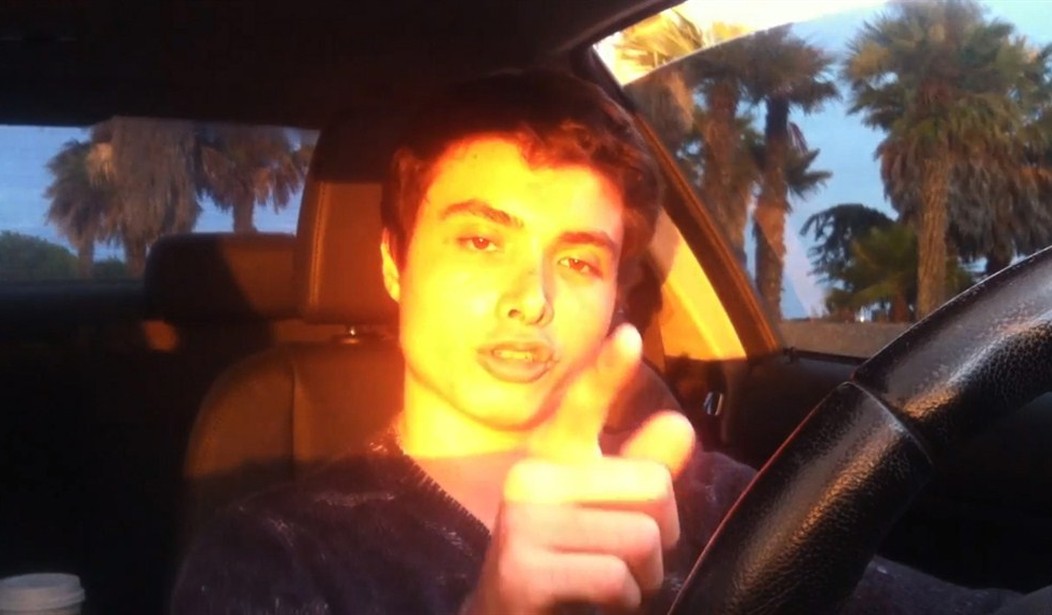A young man wrote a manifesto and went on a killing spree. This murderer, Elliot Rodger, ended up taking the lives of six people, seven if you include his own death. (I’ll wait for the coroner’s report to see whether it was self-inflicted or the result of return fire.) The massacres took place on May 23, in Isla Vista, California.
Immediately pundits went into overdrive, and social media was filled with mostly ideology-based opinion. Most of the opinion seems, well, a bit off. The big word is “orthogonal” … to the facts. I offer, instead of my settled opinion, a few questions.
Was it a “school shooting,” as often characterized?
The murders didn’t take place at a K-12 public school, private school, or charter school. The self-confessed murderer was a college student, aged 22, who killed three of his college housemates with, from what I can gather from reports, a combination of hammer, knives and machetes. So, the murder spree began not as a shooting at all. He turned his domicile into a “killing chamber,” murdering three young men, and then went off in a car trying to kill more folks by running them down. (He did not succeed. There were injuries from his maniacal driving, though.) Finally, he took his recently purchased guns and went on a shooting spree at a University of California at Santa Barbara sorority house, where he killed two. Later, he killed a young man at a deli.
Doesn’t lumping this massacre in with “school shootings” deeply misidentify the nature of the crimes?After all, half of the victims were killed without resort to guns. The events took place on grounds that weren’t schools as such, but were related to college life.
Wouldn’t it be more accurate to call this a “college massacre”? Or, as I identified it up front, a killing spree?
Was he a misogynist?
Much of his manifesto is directed against beautiful young women who wouldn’t bestow their sexual favors upon him. And he set out to kill, on his fatal last day, as many blonde white women (he called them “sluts” and worse) as he could. But his first set of targets weren’t women at all, they were men. So, on the basis of the body count, his spree was not a crime of misogyny. It was a crime against people.
Recommended
But there is something appalling and significant in his fixation on blonde white women: his lust for them and his deep, resentful response to their lack of interest. It all seems extraordinarily hateful. His murders were “hate crimes.” Most murders are. But it wasn’t a personal hatred. It was based on group identification. But misogyny? Does that really get to the heart of his hate? After all, race had just as much to do with it as sex. I have only seen one commentator refer to this racial aspect at any reasonable length. Elliot Rodger was fixated on blondes.
What is the “mis-” term for hating (resenting) cool blondes? (Alfred Hitchcock might’ve known.)
But since at least one of his male victims was Chinese, it might be safe to not go overboard with the racial angle. He himself was of mixed race, white and Asian.
I’m tempted to define him as a narcissist and misanthrope. But most misanthropists don’t go on killing sprees. What sent him over the edge?
Was he a schizophrenic?
Quite a few commentators immediately leapt to the diagnosis that he was mentally ill, a likely schizophrenic.
Considering how loose most people (including many psychiatrists) use the term “schizophrenia,” I’m not sure that this helps much. Further, it doesn’t seem to fit the evidence I’ve seen.
Of course, any very disturbed person can be called “mentally ill,” but that’s just a designation. Not an explanation. Not a real diagnosis … just a mere catch-all concept that allows some folks to treat a scary person as one without rights.
Many of the pundits who took up the “mental health” issue did so saying we need a “national dialogue” on the subject, and I’m fine with that. But it might be helpful for people who wish to push that term to rationally consider skepticism about how “settled” the science of psychology is on this subject. As even a cursory reader of the Diagnostic and Statistical Manual of Mental Disorders knows, mental illnesses and disorders get voted in and out of that allegedly august tome with all the rigor of a high-school popularity contest.
It might be just as reasonable to ask: Is it possible that this young man latched on to some evil ideas, and ran with them? He was disturbed because that’s what many evil people are: disturbed. What to do with evil people is just as hard a problem to deal with as redefining them as “mentally ill.” Except that, once the mental illness label sticks, many people feel that society has solved the problem. All it has really solved is a question of attention.
Was he a victim?
As the perpetrator of awful crimes, he was the very opposite of a victim. And still, it’s awfully tempting to see him as a victim of this or that. I’ve encountered an interesting “usual suspect” list of victimizers:
o Male chauvinism
o Popular movie culture
o Sexism
o Sizism
o Bad parenting
These influences on his sad mis-development probably all have some truth to them. But his own narcissistic over-reaction, his us-versus-them view of the world, his sad, twisted notion that the world owed him — that blonde girls owed him, especially — is his own special contribution, and it became the ruling passion in his life. Those attitudes at the base of his resentments — the awful notion that “the world owed him”; that others owed more and apart from what he could elicit from them voluntarily — are attitudes that must be fought on all levels and in every soul. It’s bad personal attitude, it’s bad politics.
But it is encouraged by quite a few elements of our culture. In all sorts of unexpected places.
This doesn’t excuse what he did. Indeed, it should remind us how important it is to stand up against this “everyone owes me” meme.
In a world where all could be seen as victims, isn’t the only way out the taking of responsibility? Shouldn’t we all be striving to rise above our possible victim statuses?
Can we prevent such crimes?
Immediately, of course, the gun control crowd used the killing spree as an excuse to push “gun control,” greater strictures on the purchase and ownership of guns. Since guns were the result of only half the deaths, and the more primitive weapons proved more efficient in killing, this predictable response hardly seems spot on.
Moreover, before passing new gun laws, let’s first discuss why Isla Vista police, sent to check out Rodgers because of warnings from his family and threatening videos he’d posted to YouTube, failed to spend the two or three minutes necessary to check California’s central database of gun purchases. Had police known that he’d recently purchased three handguns, this story might have ended peacefully.
They also didn’t bother watching the young man’s threatening YouTube videos.
On the other hand, some commentators waxed enthusiastic about locking up more mentally ill people. Now that the drug war has proved so ineffective on nearly every front and from nearly every perspective, and now that the states are in effect nullifying federal law on one psychoactive drug in particular, we can imagine that there will be a renewed demand to lock up folks … for a different set of reasons. If we can’t lock up millions for using drugs we don’t approve of, why not lock them up for acting and thinking weirdly?
I suspect that a renewed therapeutic state would prove as unsuccessful at solving personal problems as the War on Drugs has been on keeping drugs out of our schools, communities, welfare rolls, and prisons.
The real issue with prevention is especially interesting in this case. His mother had informed the police in advance that he was dangerous. Some cops went to visit him. They thought him no more off than most folks. He didn’t seem crazy.
But that was not the point. “Seeming crazy” isn’t either a medical diagnosis (which the police are as unqualified to give as I am) or a risk assessment. There was enough information to begin a thorough investigation. Real police investigation could take place. A tail could be placed on the young man. A case opened up, since he had made public threats.
But that didn’t happen in this case and may not happen next time.
The real protective element in society is us. If more people were better armed, the latest spree murderer may not have shot as many people. Concealed carry permits, were they more readily available in California and elsewhere, might indeed spark more caution from evil men like the young Mr. Rodgers. He did, after all, confess to plotting his spree to focus on areas where he expected the least resistance.
That being said, while violence in America has plummeted in recent years, there may be nothing we can do, with certainty, to prevent those intent on doing mass murder.

























Join the conversation as a VIP Member